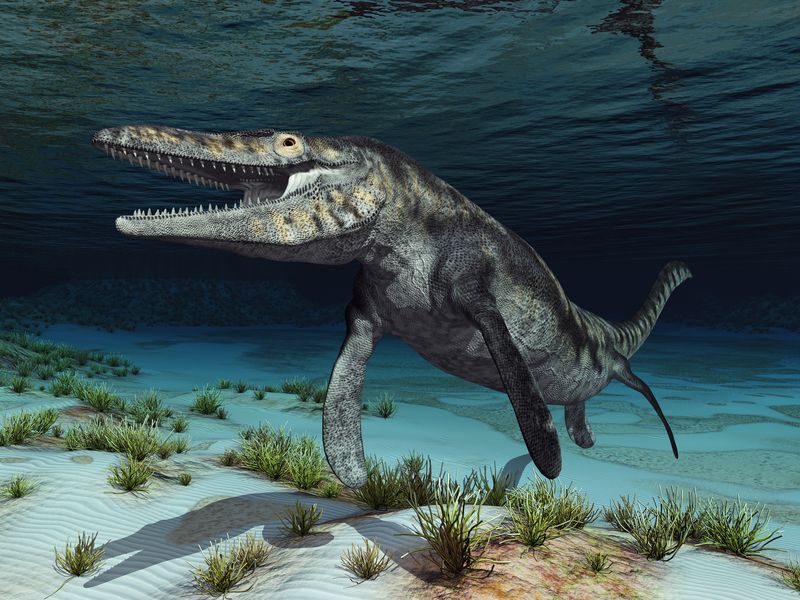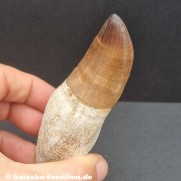
The
Mosasaurs were fascinating marine reptiles that ruled the oceans during the Upper Cretaceous, around 83.6 to 66 million years ago. These impressive creatures belonged to the
Mosasauridae family and were closely related to modern-day lizards and snakes.
Mosasaurs were characterised by their perfect adaptation to life in the water. Their extremities had evolved into fins that exhibited the phenomenon of hyperphalangy - supernumerary phalanges that enabled improved manoeuvrability in the water. The long tail ended in a hypocercal fin, with the end of the spine curving downwards and supporting the larger part of the caudal fin.
The skull of the
Mosasaurs was elongated and equipped with a strong jaw. Their teeth were mostly pointed and uniform, although there were exceptions such as the genus
Igdamanosaurus, which had spherical crushing teeth. A special feature was the joint in the central lower jaw, which allowed the mouth to be opened wide.
Mosasaurs were opportunistic hunters and were at the top of the marine food chain. Their diet was varied and included fish, sharks, sea turtles, ammonites, seabirds and even other marine reptiles. Their powerful jaws and ability to open their mouths wide enabled them to swallow large prey whole.
Fossil finds indicate that
Mosasaurs led an aggressive lifestyle, as evidenced by numerous fractures on their skeletons. Their hunting strategy was probably based on quick surprise attacks rather than stalking their prey.
The first
Mosasaur fossils were discovered in the Netherlands in the late 18th century. Since then, numerous finds on all continents, including Antarctica, have increased our understanding of these fascinating creatures. Of particular note is the discovery of an almost complete
Mosasaur skeleton in Kansas, USA, which provides valuable insights into the anatomy and lifestyle of these animals.
Mosasaurs became extinct at the end of the Cretaceous period, possibly due to climate change and the famous meteorite impact that also led to the extinction of the
Dinosaurs. Their disappearance marked the end of an era and paved the way for the success story of mammals in the oceans.

 The Mosasaurs were fascinating marine reptiles that ruled the oceans during the Upper Cretaceous, around 83.6 to 66 million years ago. These impressive creatures belonged to the Mosasauridae family and were closely related to modern-day lizards and snakes.
The Mosasaurs were fascinating marine reptiles that ruled the oceans during the Upper Cretaceous, around 83.6 to 66 million years ago. These impressive creatures belonged to the Mosasauridae family and were closely related to modern-day lizards and snakes.